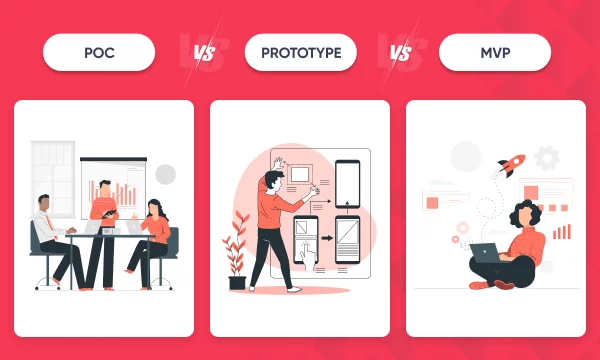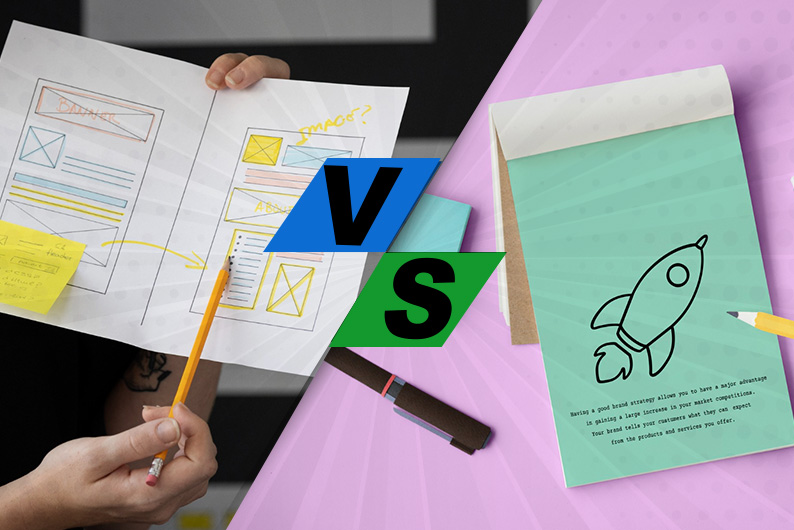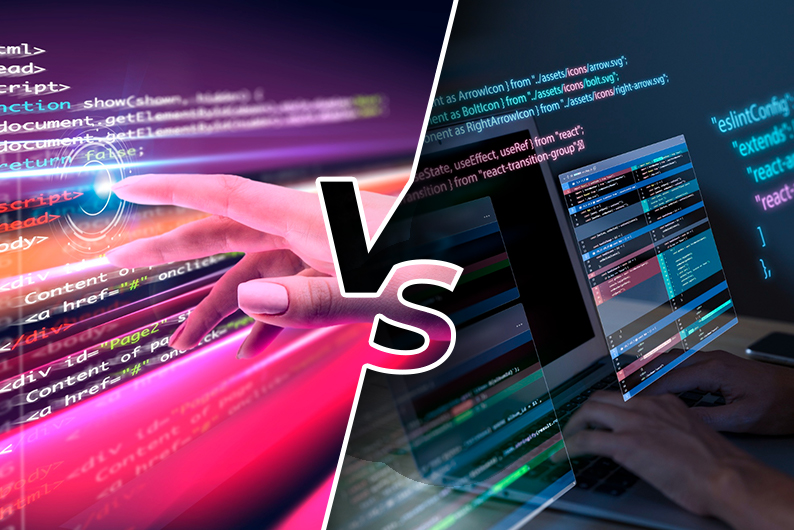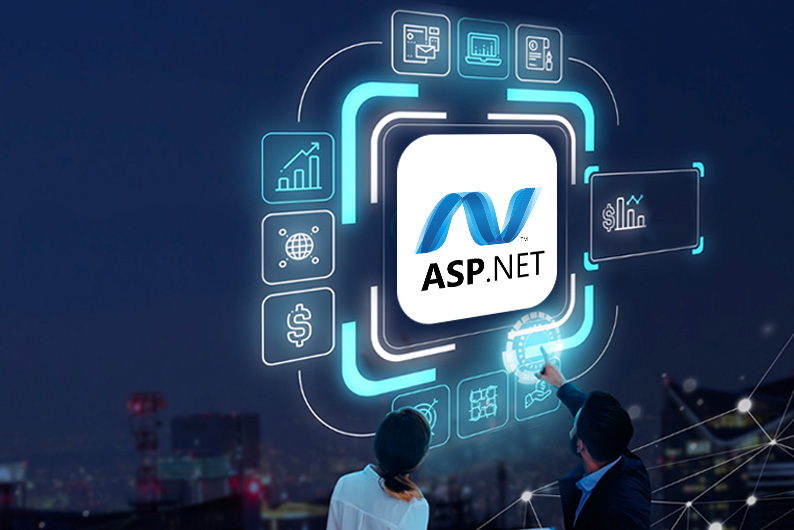Innovation has led the way in today’s generation. In each and every business, many things are changing drastically, and the same goes for the development industry. Let us understand that how the MVP( Minimum Viable Product) and Prototype have been in a race to determine the success of development of a product and when to use MVP or Prototype.
Understanding MVP and Prototype
A prototype begins the process of designing your product. It's the formation stage where designers, developers, and product owners together work towards a shared understanding of the design.
How to decide between MVP and Prototype?- A big question

In the product development lifecycle, a prototype is the first version that provides a glance at the product's overall look and working process. The creation of a prototype, prior to proceeding to the Minimum Viable Product (MVP) stage, is crucial for comprehension of intricate algorithms and understanding the system's requirements. So, it is essential to know when to use MVP or Prototype.
What is a Minimum Viable Product (MVP)?
The term MVP, short for Minimum Viable Product, holds a distinct meaning in comparison to a Proof of Concept (PoC) or a Prototype. MVP refers to a functional product, despite having a restricted feature set. It is purposely constructed to fulfill the needs of end users.
The core goal of an MVP is to evaluate market receptivity and user acceptance, pinpoint preferred features and ascertain which additions must be considered in the course of further development. Therefore, an MVP signifies a progression from PoCs and Prototypes, yet it still falls short of representing the product's final version."
Exploring Prototypes
With emerging changes, there are many new introductions, but there are mainly 4 types of prototype models:
- Rapid: This type of prototyping, also known as a closed-ended prototype model, offers a quick preliminary solution with the flexibility for modifications based on user feedback.
- Evolutionary: An evolutionary prototype model revolves around the continuous improvement of prototypes. Each prototype is an enhanced version of the previous, refined based on user feedback.
- Incremental: In the incremental model, the final product gets divided into individual components, each with its distinct prototype. These prototypes are independently developed, tested, and ultimately merged to form the final product.
- Extreme: The extreme prototype model gets typically employed in web development. Here, multiple web prototypes get developed and integrated into the final product.
Choosing Between MVP and Prototype
The terms MVP and Prototype are frequently interused, but they have distinct definitions and applications. But there are certain cases where any one of them has a greater use than the others. So, let us understand how to decide between MVP and Prototype:
- Scenario-based Decision Making
The main aim of an MVP (Minimum Viable Product) is to collect user feedback and evaluate the accuracy of the software built. Whereas, a prototype is created to test an idea in physical form assess the authenticity of a problem, and see whether the idea can be implemented or not. An MVP is considered a fully functional product with only essential features included, while a prototype serves as a simulated version of the final product. It replicates the visual design and navigation but may not have all features fully functional.
Creating a prototype will cost less as it does not require any kind of intense development process. However, creating a minimum viable product (MVP) requires a heavy clear-cut budget evaluation because it needs more comprehensive development requirements.
- Time-to-Market Considerations
Creating an MVP (Minimum Viable Product) generally takes longer than creating a prototype. The reason for this is that MVPs are designed to evaluate effectiveness and gather user feedback. In contrast, prototypes typically require less time to develop.
- User-Centric Approach
The general practice is to make MVPs accessible to the public. This approach enables real users to experience and evaluate the product, putting themselves in the shoes of potential customers. On the other hand, prototypes are usually used for private testing purposes.
Advantages and Disadvantages

Although both MVP and Prototype have an important role to play, there are some advantages as well some disadvantages. IntelliSource is one such company that helps you to understand the difference between MVP and Prototype. These pros and cons can be both for the users as well as developers. Let us look at them:
MVP Advantages
Utilizing a minimum viable product (MVP) has really an important part to play. Many customized software Development companies make MVP so that the chances of the failure of the product are reduced by a considerable amount. Below are some of the advantages of building an MVP for the companies:
- One of the advantages of using a Minimum Viable Product (MVP) is that it enables faster market entry. It takes less time to be introduced in the market.
- User feedback: An MVP is made to collect immediate user confirmation and feedback, which can bring future changes and evaluation of the product.
- Economic Development: The development of MVP focuses on being cost-effective by removing unnecessary features and only including the essential elements so that it can be a success.
- Reducing Risks: The MVP model helps to find threats by early evaluation of the product. Hence, the final product by software development services proves to be of the best quality.
- Competitive advantage: The MVP model helps the companies to get some competitive advantages and make big changes to the market.
- Iterative Enhancement: It refers to a process that allows for progressive development completely based on user feedback. It enables dynamic and consistent improvement through multiple stages of refinement.
- Customer Acceptance: By using the MVP methodology, we can ensure that the product is made in lieu of the needs of the target audience. This approach ultimately leads to higher success rates among customers.
MVP Disadvantages
With low cost and better competitive advantages, MVP also has some disadvantages like:
- Losing Focus
The process of creating an MVP (Minimum Viable Product) can sometimes lead to a lapse in concentration. Indulging in the iterative development methodology demands a high degree of focus, dedication, and strategic precision regarding the end goal. A deviation might lead to you spending more resources than initially planned.
2. Rising Incumbent Competition
Ensure that you are aware that your idea might not be singular. Your competitors might quickly catch up, or they might even overhaul you. They might scrutinize your product, find its weaknesses, enhance it, and devise a superior version for themselves, gradually encroaching your market space.
3. Misfit Technology Stack
Finding the fitting tech stack and architecture aligned with your vision might be time-consuming. This exploration phase might often prove to be daunting, pricy, and could lead to unforeseen postponements.
Prototype Advantages
Prototype are quite earnest and has great potential. Let us look at its advantages:
- Prototypes offer a platform for early user and stakeholder input, guaranteeing that the final product meets the anticipated pattern of usage and expectations.
- By highlighting potential design and technical issues before initiating mass production, prototypes help reduce defects to the minimum.
- Trialing and fine-tuning of concepts via prototyping curtail expensive re-doing, thereby maximizing the utilization of resources.
- Extensively assessed prototypes leave a striking impression on probable investors, showcasing both the product's
Prototype Disadvantages
Although Prototypes has many features that allure a company to get its benefit as well, but it does not come with a positive side only. Below are some of the disadvantages of the prototypes:
- The current model involves a high level of expense.
- Due to frequent changes in customer requirements, the supporting documentation leaves room for improvement.
- High variation in requirements might pose challenges.
- After viewing the initial prototype, some customers demand rapid delivery of the actual product.
- When developers hasten the development of prototypes, there's potential for less-than-optimal outcomes.
- The initial prototype may sometimes lead to a lack of customer interest or dissatisfaction with the product.
- The number of iterations can be determined with certainty.
- We sometimes face issues pertaining to inadequate or incomplete problem analysis.
- The system's complexity may increase as a consequence.
Making the Right Choice
As we already know, MVPs and Prototypes have their own uses and needs in different circumstances. So, it is better to understand the difference between MVP and Prototype and where can there full potential be seen and experienced.
A prototype is useful for several circumstances:
- For providing a visualization of your product’s workflow, and how it looks and feels to users.
- Sealing financial deals by impressively presenting your product's design and user experience to potential investors.
- Collecting preliminary user responses from a niche audience to authenticate the idea.
- Meeting strict deadlines where a rapid representation of a concept is crucial.
- Gauging user acceptance before deciding to proceed with the development process.
When should you use an MVP? Making the right choice
An MVP is required in the following scenarios:
- To decrease the chance of product failure by validating initial assumptions through the inclusion of necessary functionalities.
- Streamlining the development process by concentrating on the essential features, while saving time and reducing costs.
- Using early user feedback as a crucial driving force behind continuous and iterative enhancements.
- Aiming to retain more customers at a lower cost while expediting the process of turning your idea into a profitable product.


 Previous blog
Previous blog



